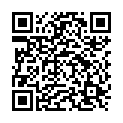|
|
|
| Module code: PIB-MSNT |
|
2V+2P (4 hours per week) |
|
5 |
| Semester: 6 |
| Mandatory course: no |
Language of instruction:
German |
Assessment:
[still undocumented]
|
KI698 (P222-0077) Computer Science and Communication Systems, Bachelor, ASPO 01.10.2014
, semester 6, optional course, technical
KIB-MSNT Computer Science and Communication Systems, Bachelor, ASPO 01.10.2021
, semester 6, optional course, technical
KIB-MSNT Computer Science and Communication Systems, Bachelor, ASPO 01.10.2022
, semester 6, optional course, technical
PIB-MSNT Applied Informatics, Bachelor, ASPO 01.10.2022
, semester 6, optional course, informatics specific
PIB-MSNT Applied Informatics, Bachelor, SO 01.10.2026
, semester 6, optional course, informatics specific
|
60 class hours (= 45 clock hours) over a 15-week period.
The total student study time is 150 hours (equivalent to 5 ECTS credits).
There are therefore 105 hours available for class preparation and follow-up work and exam preparation.
|
Recommended prerequisites (modules):
None.
|
Recommended as prerequisite for:
|
Module coordinator:
Prof. Dr. Albrecht Kunz |
Lecturer: Prof. Dr. Albrecht Kunz
[updated 10.11.2016]
|
Learning outcomes:
After successfully completing this course, students will be able to carry out measurements in the laboratory using equipment (e. g. oscilloscope, function generators, transmitter, spectrum analyzer, etc.), evaluate, interpret and then present their measurement results.
Students will be familiar with the relevant simulation tools used in communications engineering and digital technology. They will be able to simulate a given circuit and subject the simulation results to a critical comparison with real measured values. They will also be able to explain the measured and simulated phenomena with regard to the circuit technology used.
Students will be capable of working independently on more complex simulation and measurement tasks. In addition, they will acquire basic knowledge in semiconductor technology in order to be able to use the right circuitry techniques for various applications.
[updated 19.02.2018]
|
Module content:
1. Basics
1.1 Basics of telecommunications electronics and semiconductor technology
1.2 Introduction to and practice in working with the simulation tools ORCAD PSPICE and Matlab/Simulink
2. Simulation and measurement of analog modulation methods
2.1 Measurements on test setups in the telecommunication electronics lab
2.1 Simulation of analog modulation methods with ORCAD PSPICE and Matlab/Simulink
3. Simulation of digital modulation methods
3.1 Simulation of a digital transmission chain with Matlab
3.2 Analysis of bit error rates subject to SNR (via simulation in comparison with theory)
4. Aspects of communications engineering in audio transmission
4.1 Basics A/D and D/A conversion
4.2 Simulation of the different A/D and D/A converter concepts using ORCAD PSPICE
5. RFID technology and demonstration
5.1 Programming of the Arduino Uno board / RFID RC522 module
6. Simulation of circuits from digital technology
6.1 Structure of different counters (e. g. Gray code)
6.2 Pseudorandom number generators
6.3 Analysis of the properties of M-sequences (autocorrelation, cross correlation)
6.4 Use of pseudorandom number generators in mobile communication
[updated 19.02.2018]
|
Teaching methods/Media:
Measurements and simulations in the telecommunication electronics lab
Equipment used: Oscilloscope, function generators, measuring transmitters, AM/FM modulators, spectrum analyzers, CMOS/TTL gates, transmission gate, PLL
Simulators used: ORCAD PSPICE, Matlab/Simulink, digital technology simulators
The following should be used for presentations during the final demonstration: MS PowerPoint, white board, flipchart
[updated 19.02.2018]
|
Recommended or required reading:
Werner, M.: Nachrichtentechnik, Vieweg Teubner Verlag
Proakis, Salehi: Contemporary Communication Systems using MATLAB, Brooks/Cole
Rutledge, D.: The Electronics of Radio, Cambridge University Press
Fliege, Gaida: Signale und Systeme: Grundlagen und Anwendungen mit MATLAB, Schlembach Fachbuchverlag
Kammeyer: MATLAB in der Nachrichtentechnik, Schlembach Fachbuchverlag
Heinemann, PSPICE: Einführung in die Elektroniksimulation, Hanser Verlag
Werner, M.: Digitale Signalverarbeitung mit MATLAB: Grundkurs mit 16 ausführlichen Versuchen, Vieweg Teubner Verlag
Baker, R. Jacob: CMOS Circuit Design, Layout, and Simulation, IEEE Press Series on Microelectronic Systems
DeMassa, Thomas A.: Digital Integrated Circuits, John Wiley & Sons
Hilleringmann, U.: Silizium Halbleitertechnologie, Vieweg TeubnerVerlag
Globisch, Lehrbuch Mikrotechnologie, Hanser Verlag
[updated 19.02.2018]
|


